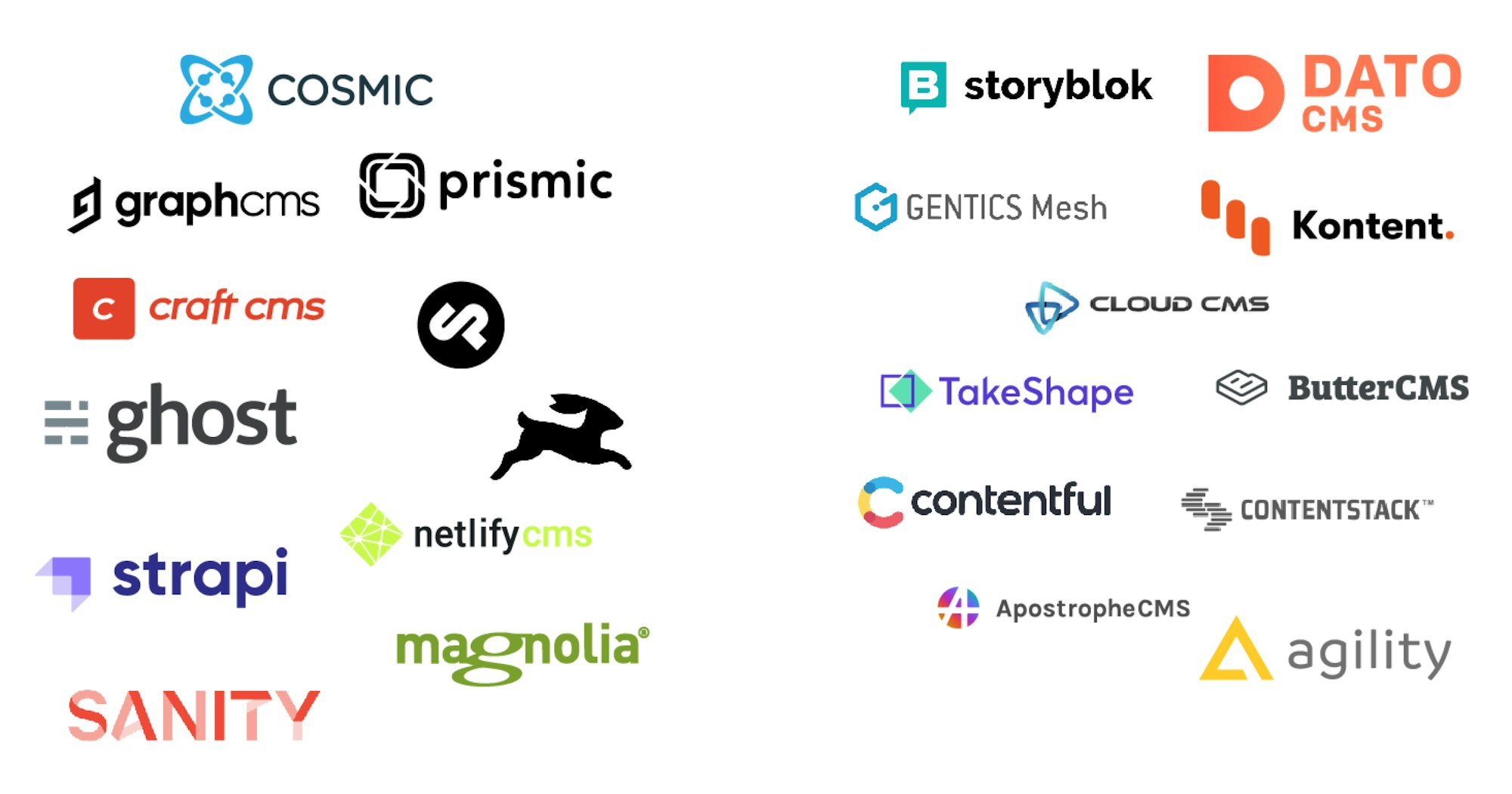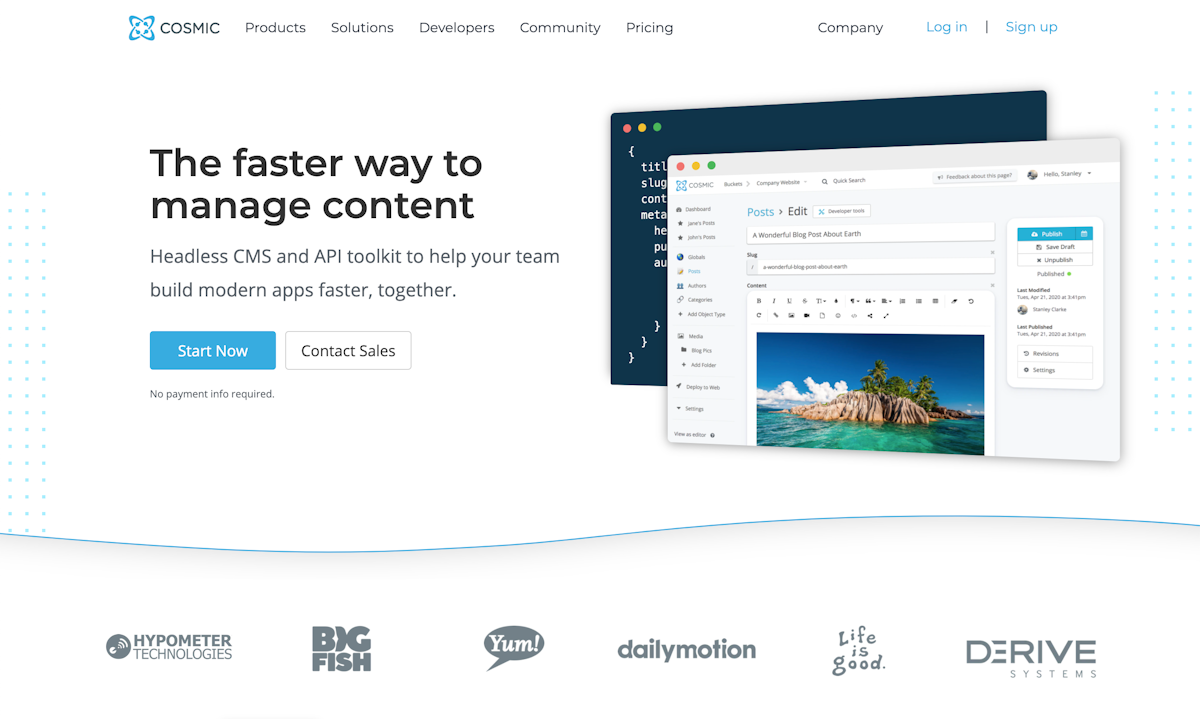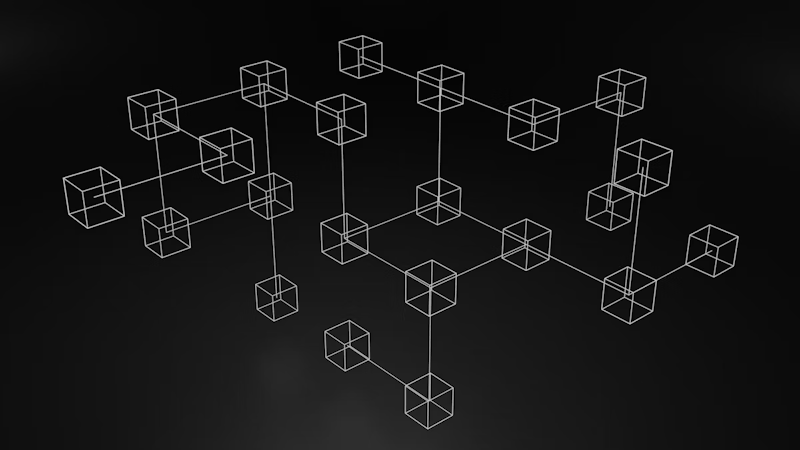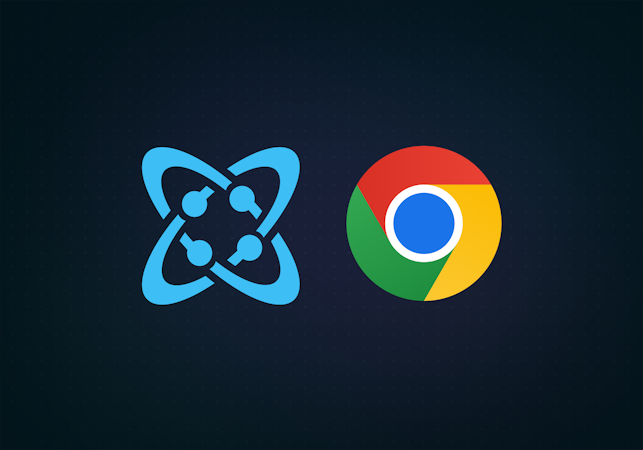
Kyle Meagher
September 17, 2020


When it comes to contemporary customer experiences, content is the differentiator. Each brand is vying to spin up content-rich landing pages, products, websites, and applications faster than the competition. And ideally, for a fraction of the time and cost.
Each team member, from developers to content editors to the C-suite, wants to create and deliver compelling content across channels, without the need to micromanage their content infrastructure at every turn.
As users demand more speed and connectedness from their digital experiences, savvy businesses have realized that a faster approach to content publishing starts with an innovative content management system; one that gives them enhanced control over content creation and distribution.
If you’re looking for your next content management system, or are simply curious about the options on the market, familiarizing yourself with headless architecture, and the products offering it, is vital.
If you already know about the headless approach to content and just want to see the list, go on and skip ahead. Otherwise, we’ve provided a few details about a headless CMSand headless architecture in general, including how to choose between pure headless and decoupled headless CMS.
What is a Headless CMS?
If you’re in the content experience space you probably know about headless CMS already. The headless market has done nothing but grow over recent years and new options are being developed at neck-breaking speeds.
A headless CMS is a backend-only content management system that unlike a traditional CMS, removes the presentation layer, or the frontend, from the backend data storage, allowing developers to use any frontend tool they want to present the content they have created.
In the headless environment, content is stored on the cloud or in on-premise databases and provided as a service through APIs, which are, besides the separation between content and presentation, what make a headless CMS the best option to future-proof your business. While some channels aren’t yet highly used across the board, headless architecture and APIs enable you to deliver content beyond websites and apps and onto IoT, AR, VR and other emerging technology devices.
This means that headless CMS are better equipped to create, distribute, and optimize omnichannel content experiences that deliver value directly to customers and clients. At the same time, the headless architecture makes CMS extensible and capable of augmenting what they do with a simple API.
So how do we evaluate what makes a headless CMS truly top class? Let's take a look at the elements of the headless architecture, so that you can better understand what goes into our ranking system.
The Elements of Headless Architecture
According to headlesscms.org, “Headless CMS' are [the] opposite of legacy systems like WordPress, Drupal, Joomla, etc. [Legacy systems] traditionally have to be hosted and built together with the site every time it’s served. A headless CMS doesn’t care where it’s serving its content to. It’s no longer attached to the frontend, and the content can be viewed on any platform.”
The headless architecture separates the management of a website into two different systems: one for content creation and storage, and another system that’s responsible for consuming and presenting data through the use of an interface, no matter what it is.
In a headless CMS, the frontend is removed from the equation, leaving only the backend, which acts as an API-based content repository, delivering content to any frontend framework, from single page applications to digital signage to good old fashioned websites.
From a technical perspective, headless architecture is composed of the following elements:
A database or backend where content and digital assets are stored,
A content management system where content is created
An API that serves as a bridge between the CMS backend and the frontend,
Choosing A ‘Pure’ Headless Or Decoupled CMS
By now, you might be convinced that headless architecture is the answer to the users’ increasing need for omnichannel experiences. A headless CMS simplifies content delivery and gives developers unparalleled flexibility when it comes to developing new digital experiences. The thing is, for marketers, a ‘pure’ headless CMS can be problematic, especially for teams without a developer on hand to create the head.
Decoupled or hybrid CMS were born as an answer to this issue. They make it easy for marketers to create content and usually include templates and drag-and-drop interfaces to simplify things.
A ‘pure’ headless CMS is built to be an API-first CMS, whereas a decoupled CMS is more like a traditional CMS with an optional head and APIs attached; yet, as some vendors use the terms carelessly, it can be hard for users to understand the difference.
A hybrid or decoupled CMS is a CMS whose ‘head’ or templating system is separated from the content creation and storage part. Unlike traditional CMS that often force users to use the templating engine that comes with the CMS, a decoupled CMS can connect and integrate to custom heads depending on the channel.
If you want more information about the differences between pure headless and decoupled CMS, check out our ‘Headless CMS: Everything You Need to Know’ article.
Now, without further ado, here’s our list of the top 47 headless CMS you need to keep an eye on going into 2021.
The Big List of 47 Headless CMS
ApostropheCMS

Founded in 2008 and based in Philadelphia, ApostropheCMS is a free open source CMS with multi-tenant support. Apostrophe is 100% JavaScript based and uses MongoDB for intuitive document storage. It’s built on Express framework and makes creating templates using Nunjucks and LESS stylesheet easy. REST APIs make connecting to headless capabilities easy and also includes in-context editing and drag-and-drop content for non-technical users.
Availability: Free to download
Cosmic

Cosmic is a headless, API-first CMS built for developers by developers. It is fully extendable, making it perfectly equipped for building custom dashboards with best-in-class API services including REST and GraphQLAPIs. Modern content teams can seamlessly collaborate and rely on an easy-to-use content editing experience that allows for faster shipping times. In addition Cosmic includes out-of-the-box features like rich text, media manager, global CDN, flexible user roles and permissions, optional add-ons include webhooks, localization, revision history, single sign on, scheduled publishing, and more.
Availability: Personal (Free), Starter, Pro, Enterprise
Bold

Quintype Technologies Pvt. Ltd, founded in 2014 is headquartered in Bangalore India. Bold, is an enterprise headless CMS developed by Quintype Technologies with omnichannel distribution and personalization. This is further boosted by machine learning algorithms that help deliver improved digital experiences. Bold is customizable for newsroom workflows and content categorization. It offers REST APIs for front-end control and a secure enterprise cloud with DDOS protection, SSL and auto-scaling infrastructure.
Availability: Free Trial, Premium (based on traffic), Custom Enterprise
Craft CMS

Originating in Oregon in 2013, Craft CMS is an open source headless CMS that empowers creative marketers with a user-friendly interface and a customizable backend. It features decoupled capabilities supported by GraphQL API as well as integrations for commerce, Salesforce and HubSpot. Included is support for 25 languages, a plug-in store and more.
Availability: Free, Pro, Enterprise
Ghost

Singapore-based Ghost was founded in 2013 and simplifies the process for creators that want to publish content online and grow an audience. It is an open source headless Node.js CMS that is Jamstack customizable. REST APIs can connect to custom themes or Jamstack frontends. Integrations are available with open source developer SDKs for hundreds of apps directly or via Zapier.
Availability: Basic, Standard, Business
Zesty

Zesty.io is a cloud-based, headless CMS designed for marketing teams. Zesty enables marketers to build content-rich websites and deliver content across apps and IoT devices. Founded in 2010 in San Diego, California, Zesty speeds content creation with content indexing, SEO management, customized templates, and video content. Zesty also enables users to plan a workflow as well as take full control over the authoring process.
Availability: Small Business, Business, Mid-Size Enterprise, and Enterprise
Strapi

Strapi is an open-source headless CMS based on Node.js, which makes it useful for developers to lay the foundation for a solid user experience. Strapi enables developers to build simple database configurations with Mongo, Postgres, and MySQL as well as modify the backend code to build a functioning web application in no time.
Availability: Standard, Gold, Silver
Prismic

Prismic is a developer-first headless CMS that was founded in 2013. It lets developers create custom fields that content teams can use. Users can build with any JavaScript framework whether Gatsby, React or Vue and use flexible queries with RESTful API and GraphQL. Preview and scheduling for publishing content with ecommerce and other features also available.
Availability: Free, Medium, Platinum, Enterprise
Cockpit CMS

The brain-child of Artur Heinze, Germany-based Cockpit was developed in 2013. It is an open source API-driven headless CMS with a flexible content structure and support for multiple devices and cross channel distribution. An API-first and JSON content approach manages structured content that can be reused across channels.
Availability: Free to download
Netlify CMS

From the creators of Jamstack, San Francisco Netlify CMS is built on client-side JavaScript, reusable APIs and prebuilt Markup which provides better performance and security than platforms like WordPress. It offers open source content management that fits into the Git workflow. Netlify combines with any SSG for flexible and fast projects.
Availability: Free to download
XOOPS CMS

XOOPS CMS is an extensible, object-oriented dynamic content management written in PHP. XOOPS enables users to build community websites, company portals and intranet sites, weblogs, and many different digital experiences. XOOPS CMS enables developers to install and uninstall modules quickly to develop faster and with less interference and uses relational databases such as MySQL to store data and run the CMS.
Availability: Free to download
Dialogue Wise

Australian DialogueWise is an API-based headless CMS that provides location, device and sentiment-based content delivery methods. It includes web hooks that notify about any changes in content as well as provides a test-sandbox for previewing content and custom scripting to personalize experiences.
Availability: Free, Small, Medium, Enterprise
Sanity

Founded in 2016, Sanity is a fast and flexible API-first headless platform for building cutting edge experiences with structured content. Create custom front ends with GraphQL or GROQ, Sanity’s open source querying language to push content anywhere. Sanity also offers real-time collaboration, document revision and instant previews.
Availability: Free, Advanced, Enterprise
Directus

Directus, is a NYC-based data-first headless CMS. It is open source and manages content as a pure SQL database without the need for a property data model or content storage. Directus uses APIs or SDKs to connect to kiosks, wearables, IoT devices and more and includes customizable workflows.
Availability: Self-hosted, Basic, Standard, Pro, Enterprise
Storyblok

Storyblok is a headless CMS with a powerful visual editor that makes it simpler for marketers to build digital experiences. Storyblok provides users with the flexibility and freedom to be used for a myriad of use cases, which enables marketers to configure it the way they want and create digital content that suits the audience’s needs. Also, with Storyblok developers can define content types and receive structured content in JSON that the editor can use to preview it completely decoupled from the backend.
Availability: Free, Basic, Advanced, and Premium
Scrivito

An enterprise-class SaaS platform founded in Berlin,Germany in 2015, Scrivito is a multi-tenant decoupled CMS that delivers assets using APIs. Powered by AWS it also leverages React.js and Jamstack, a WYSIWYG editor, customizable permissions and a versatile content browser.
Availability: Team, Company, Enterprise, Enterprise Plus
Amplience

Founded in 2008, London-based Amplience is a best-of-breed CMS for the retail industry. Amplience combines content, experiences and commerce. It provides capabilities to plan, schedule, product and deliver dynamic content, optimize content for product pages and deliver to all channels and devices.
Availability: Request pricing
Cloud CMS

Boston-based Cloud CMS was founded in 2010 and provides a decoupled JSON and binary content platform. Git-like version control is available with feature-rich RESTful API and GraphQL. Cloud CMS uses Amazon DocumentDB as an alternative to MongoDB. Available as a SaaS model or with on-prem hosting using Docker Containers.
Available: Starter, Business, Plus, Enterprise
Contenta CMS

ContentaCMS provides a decoupled Drupal distribution. It is a standard API-ready platform that makes using decoupled Drupal easier. Free and open source it includes tools and configuration to move away from server-side rendered sites and distribute to a variety of frontends.
Available: Free to download
Cotonti

An open-source PHP-based content management framework. Cotonti is fast and lightweight while remaining modular and extensible, allowing for additional plugins and integrations. It is powered by its own template engine and has an easily learned interface for inexperienced programmers as well.
Availability: Free to download
Flotiq

Flotiq is an API-first CMS that connects content to Gatsby and deploys to Herekoku instantly. Secure and scalable with feature packed User APIs and SDKs and works with Jamstack.
Availability: Free to download
Gentics Mesh

Austrian company Gentics’ products include an open source CMS that requires no setup or dependencies. Offers custom content components and dynamic layouts, GraphQL and RESTful APIs as well as Elasticsearch support.
Availability: Free to download
PushTable

PushTable is an API-driven headless CMS built on top of GCP and Firebase. It leverages Google’s fast global CDN and provides fully flexible data structure and serverless workflow support for content management.
Availability: Free to download
Squidex

Squidex is an open-source headless CMS and content management platform that provides developers with a rich API ecosystem with OData filter and Swagger definitions where developers can build their UI on top of it using ASP.NET Core and CQRS. Squidex works for both Linux and Windows.
Availability: Starter, Basic, Professional, Business
Superdesk

Superdesk is, first and foremost, a digital newsroom system. The platform combines the API-driven functionalities of a headless CMS with the workflow features news creators and editors need to create and distribute news quickly. However, despite being ready for news creators, Superdesk’s open-source functionalities and integrability makes it possible for organizations to add the most-relevant functionality to their business.
Availability: Self-starter, Pro, Enterprise
TakeShape

TakeShape is a Jamstack-ready, headless CMS that uses GraphQL to fetch content across systems from a single endpoint. TakeShape offers users a visual interface and a powerful templating engine that can be used to deploy websites quickly. TakeShape also enables powerful content modelling and localization support.
Availability: Developer, Professional, Enterprise
Xamoom

Xamoom is a mobile-first CMS that leverages Google’s AppEngine to create mobile campaigns, webs, and apps easily. Using xamoon, marketers can create context-based mobile experiences in several different languages as well as embed multimedia and enable location-based experiences for the website’s visitors.
Availability: Basic, Pro, Premium
Contentful

Berlin based API-first content platform Contentful was founded in 2013. It acts as a single hub for unifying content and integrates with tools that perform translations, segmentation and more. Business leaders, marketers, developers and product managers are armed with the tools they need for building digital experiences.
Stateless RESTful APIs offer total control over content and assets. It features microservices architecture, is language and framework agnostic with open source components and includes an editor toolbox that provides custom integrations and content modelling.
Availability: Free, Medium and Custom Enterprise Solutions
DatoCMS

Founded in Firenze Italy in 2017, DatoCMS is a headless CMS that offers a single centralized content hub, a flexible content model with faster integrations backed by a global delivery network that spans 200 cities and 90+ countries. Content is channel agnostic, making it reusable across channels and provides fast loading times to hit the 100% standard for Google’s PageSpeed Insights.
Availability: Developer, Professional, Scale
Kentico Kontent

A headless CMS that provides clean and structured content delivery via API. New England-based Kentico offers a cloud-first CMS known as Kontent that can also be deployed as part of the CI/CD pipeline. It features workflows that connect processes and deliver content to any platform. Also offering SaaS performance with an easy to use authoring experience and editorial calendar for staying organized.
Availability: Free Trial, Monthly Business, Premium and Enterprise Plans
Butter CMS

Founded in 2014, ButterCMS is an API-first CMS that provides content management for multichannel and multisite options. Its global content-API is made for any tech stack and includes a blogging engine with built-in SEO. Global CDNs improve performance and scalability, plus flexible content modelling using components.
Availability: Individual Blog Plans, Startups, Small Businesses and Enterprise
Contentstack

Founded in 2018 and based in the Bay Area, Constenstack is a modern CMS for personalized omnichannel digital experiences. It harmonizes business and technology for better collaboration and quicker delivery from idea to digital content in a matter of days. It is frontend framework agnostic with a rich visual editor and offers integrations via APIs.
Availability: Free Trial, Business and Enterprise
Agility CMS

Toronto-based Agility CMS has been around since 2002 and touts itself as the fastest headless CMS. It offers built-in page management and content delivery to any frontend using RESTful APIs, Graph QL and Jamstack.
Users can easily manage content using content modeling and version control to build multiple content relationships. Non-technical users can make changes without developer help and integrations with the entire MarTech stack are possible.Availability: Free, Standard, Pro
Mura

Founded in California in 2008, Mura is a complete digital experience platform that provides content management, personalization and CaaS. It is a nimble content creation hub that avoids the one-size-fits-all approach. Users can choose to go headless or decoupled with support for Vue.js, Angular, Next.js and more. It is also container-ready and supports the DevOps workflow.
Availability: Request Demo
dotCMS

dotCMS is a hybrid content management system. Founded in Miami, Florida in 2008, it offers the freedom of headless with the functionality of traditional CMS. Users can rely on multi-cloud deployment on public or private cloud, a scalable Java infrastructure with support for low code and no code that includes custom templates, workflows and drag-and-drop capabilities.
Availability: Request Quote
Ingeniux CMS

Founded in Seattle in 1999, Ingeniux is an agile CMS that provides an alternative to the Web Experience Suite. It Supports a modern web experience with secure portals, mobile apps and connections to multiple customer touchpoints and modern SPAs. Ingeniux works for technical content and can edit DITA and XML. Cloud hosting is available on Azure or AWS and there are allowances for 3rd party content editing within workflows.
Availability: Request a Quote
Crafter CMS

Virginia-based Crafter Software was founded in 2013 and its products include a Git-based headless CMS for building apps, websites and omnichannel experiences. It features user-friendly content creation and publication tools as well as severless and stateless dynamic content delivery support for operations. Users are capable of building not only enterprise websites and digital signage with GraphQL APIs but also video experiences using OTT video for live training and VOD.
Availability: Free, Cloud Scaling Packages
Evoq Content

Evoq Content is an open source .NET CMS for delivering modern web experiences. The CMS product of DNN software, it offers extensibility built on the back of open APIs and a marketplace of plugin apps. It provides flexible pre-built layouts and templates with inline image editing. Digital assets can be handled with a central DAM with Box, Amazon S3 and Dropbox connectors. Also offered are page caching and Evoq on Demand cloud deployment for scalability and version tracking for secure access.
Availability: Request a demo
Core dna

Core dna was founded in Melbourne, Australia in 2000. As a DXP it combines content, commerce, intranet and more. PaaS is available for managing infrastructure with enterprise-grade cloud computing. Included are 80+ production-ready apps for out-of-the-box use without plugins. A suite of tools for marketing and technical teams to deliver API-driven experiences including a Rich-text and HTML editor as well as 500 integrations to 3rd party systems that can be combined using webhooks or APIs.
Availability: Dependent on site volume
Magnolia

Magnolia, founded in 2003 is a modern digital experience platform that provides hyper-personalization and flexible, frontend agnostic architecture. Based in Basel, Switzerland, Magnolia is cloud-ready with scalable deployment infrastructure. The Java CMS offers several no-code integrations with Multisource. REST APIs and visual SPA editing make connecting to multiple devices simple.
Availability: Contact for pricing
Hygraph

Germany-based Hygraph (formerly GraphCMS) was founded in 2017 and offers a GraphQL native headless CMS. It provides API-first digital experiences without templates or other restrictions for developers. It also uses webhooks and versioning for content control. Included are power editors for content schema staging workflows.
Availability: Free, Team and Enterprise
Naviga Writer

NavigaWriter is a CaaS platform for newsrooms and media houses. NavigaGlobal was founded in Minneapolis in 2013 and built a CMS for journalists with an easy-to-use interface and content management system. Naviga Compass’ machine learning algorithm makes content tagging with metadata simple and improves productivity. Adapted for cross channel publication across IoT devices and SPAs. It also features a WYSIWYG interface and headless extensibility for integration with other systems.
Availability: Request pricing
ACE - ATEX Content Engine

UK-based Atex’s CMS product is a multi-channel API-first CMS that provides flexibility for developers and editors. Headless and fully scalable, ATEX’s features a GraphQL Content API and developer friendly SDKs for Java and React. Core delivery services are deployed in Docker Containers by Amazon E3S. Integrations and plugins facilitate on-demand and live video as well as content recommendations and semantic tagging.
Availability: Request pricing
Crownpeak DXM

Crownpeak was founded in Los Angeles in 2001 and offers a cloud-native DXP with multi-site management and delivery of personalized digital experiences. A/B testing, TagControl for monitoring and controlling 3rd party technologies on site are included. It also features a Universal Consent Platform for delivering experiences that comply with GDPR, CCPA and other privacy laws.
Availability: Request demo
eZ Platform Enterprise Edition

eZ Platform is Ibexa’s modular DXP for B2B companies. A content engine that creates content at scale with decoupled headless CMS, an application engine for designing and developing features in an agile environment using Symfony PHP full-stack and a Website Factory that manages content localization and includes a native Page Builder.
Availability: Silver, Gold, Platinum, VIP
FirstSpirit

Manufactured by German company e-Spirit, FirstSpirit is a hybrid CMS and DXP that manages content-driven digital experiences across multiple channels. AI-powered personalization, CaaS with agile content management and integrations built around a light IT infrastructure and flexible UX are some of its prominent features.
Availability: Request demo
Solodev
 Solodev
is a customer experience platform and CMS that enables individuals and companies to work together and leverage the power of the cloud. Solodev enables teams, from individual contributors to C-suite executives to collaborate and build context-driven digital
experiences. Solodev works on AWS, which gives the platform an extra layer of security, scalability and redundancy.
Solodev
is a customer experience platform and CMS that enables individuals and companies to work together and leverage the power of the cloud. Solodev enables teams, from individual contributors to C-suite executives to collaborate and build context-driven digital
experiences. Solodev works on AWS, which gives the platform an extra layer of security, scalability and redundancy. Availability: Free, Team, and Enterprise
Should You Be Going Headless or Decoupled?
The world of the CMS has changed over the last few years. Traditional CMS were great for working with simple websites, getting blogs up and running and pushing content to one or two channels.
Pure headless and decoupled CMS allow you to store content in the backend and then distribute it to any current and emerging channels. Pure headless CMS reduces the strain on development teams that previously needed to build and maintain their own infrastructure.
Now, headless architecture has made it possible for content and development teams to focus more time on their application instead of non-core CMS infrastructure, enabling greater content and application development velocity.
What's Next?
We hope you enjoyed this extensive list of Headless CMS options on the market. If you still aren't sure where to get started, check out Cosmic. Our powerful, intuitive Headless CMS is built with a developers-first mindset, combined with a simple UI to make it easy for teams to build and create content faster.
The digital landscape is always changing and we are constantly improving our product to satisfy the needs of modern content and development teams. We have an engaged community and Slack channel, and we're available to help you find out if going headless is right for you and answer any questions you may have.




